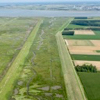
Global study addresses a major uncertainty in how saltmarshes and mangroves will respond to sea-level rise; stresses importance of preserving "accommodation space” for landward migration.
Top Stories

Global study addresses a major uncertainty in how saltmarshes and mangroves will respond to sea-level rise; stresses importance of preserving "accommodation space” for landward migration.
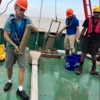
A joint VIMS-Myanmar research team is studying the processes that control the fate of the low-lying Irrawaddy-Salween Delta and its 50 million inhabitants.
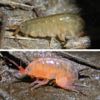
Salt marsh research shows that growing abundance of tiny shrimp infected by a microscopic parasite may portend future threats to humankind through disease.

Dr. Christopher Hein and colleagues hope to help sustain NASA’s Flight Facility and Virginia’s Mid-Atlantic Regional Spaceport on Wallops Island.
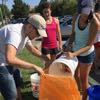
As beach season heats up around Chesapeake Bay, VIMS grad students use beach cleanups to help document and reduce marine litter.

Donna Marie Bilkovic and Molly Mitchell are co-editors and authors of a new book that explores the benefits and challenges of using “living shorelines” to address coastal issues.
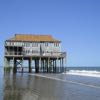
Research shows Virginia’s barrier islands are retreating up to 18 feet per year, with a resulting loss of at least 60 acres of saltmarsh annually.
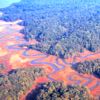
A 3-year grant from the U.S. Environmental Protection Agency will help VIMS and DEQ enhance Virginia's wetlands and their many ecosystem services.
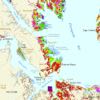
A $941,590 grant from the National Science Foundation will fund 4-year effort to identify how policymakers and coastal residents can best respond to rising seas.
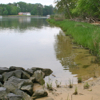
Partnership promotes a hybrid engineering approach that integrates natural and structural elements for coastal protection.

A $199,000 grant from the National Fish and Wildlife Foundation will allow VIMS researchers to help protect Werowocomoco from shoreline erosion and sea-level rise.

VIMS researchers show that the quality of coastal habitat is an important factor in managing commercially targeted species.
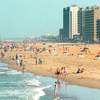
VIMS researchers collaborate with state and federal partners to assess the continental-shelf sands that beachfront localities use to protect against and recover from hurricanes.

A study led by Professor Harry Wang demonstrates the ability to predict a hurricane’s storm tide at a much finer scale than current operational methods.
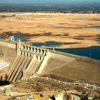
VIMS professor John Milliman cautions that the drought now gripping the American West is likely to continue, while California invites professors Elizabeth Canuel and Rob Latour to advise the state on how it should respond to the threat.

To address one of the world’s big problems—nutrient pollution and its impacts on water quality—Dr. BK Song studies some of Earth’s smallest creatures, the bacteria and fungi that help power the global nitrogen cycle.

New VIMS faculty member Matt Kirwan gained his interest in coastal wetlands the hard way—through years of muskrat trapping in the marshes of the Eastern Shore.
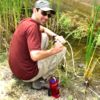
Research by Dr. Chris Hein reveals how shorelines shift in response to natural and human-driven changes in sea level, sediment supply, and coastal storms.

VIMS study is first to link quality of seagrass habitat to density of juvenile blue crabs over large areas.
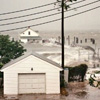
Public officials, attorneys, scientists, and concerned citizens will gather on September 13 at William & Mary for a day-long conference on "Adaptive Planning for Flooding and Coastal Change in Virginia: Legal and Policy Issues for Government."

Professor Jim Perry of the Virginia Institute of Marine Science, College of William & Mary, has been elected President of the Society of Wetland Scientists (SWS).
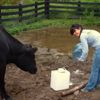
VIMS-led research reveals that organic carbon in runoff from urbanized landscapes is more likely to persist as it is carried downstream, thus contributing to low-oxygen “dead zones” in coastal waters.

New collaborative study between VIMS and USGS credits tiny crustacean "grazers" for maintaining health of seagrass meadows.

Professor Steve Kuehl and team analyze sediment cores for long-term record of extreme events and changing Arctic climate.
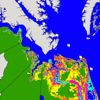
Report provides detailed plan for how the Commonwealth can best respond to coastal flooding.
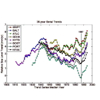
Findings confirm those of two other recent studies that find accelerating rates of sea-level rise along the Atlantic Coast of the U.S. and Canada.
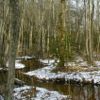
A 3-year grant from the U.S. Environmental Protection Agency will allow VIMS researchers to help localities protect the headwater wetlands that keep pollutants and excess nutrients from entering Bay tributaries.

VIMS researchers give Bay-area residents a new on-line tool for gauging the magnitude of coastal flooding and minimizing its potential impacts.
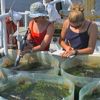
20 years after the Rio Earth Summit, a team of prominent ecologists calls for renewed international efforts to curb the loss of biological diversity, which is compromising nature’s ability to provide goods and services essential for human well-being.
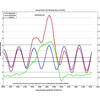
VIMS develops tools to monitor and predict coastal flooding and works with Virginia Sea Grant to spread the word to emergency managers and local residents.
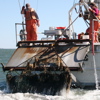
VIMS' winter dredge survey shows that Chesapeake Bay’s blue crab population is at its highest level since 1993 following 4 years of a baywide stock-rebuilding program.
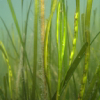
VIMS scientists and research partners document how a 15-year eelgrass restoration effort has led to a healthier and more vibrant ecosystem in Virginia's seaside bays.
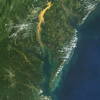
Data will allow researchers to gauge how a large plume of sediment from Hurricane Irene and Tropical Storm Lee may impact water quality and baygrasses in lower Chesapeake Bay.
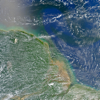
VIMS researchers join an international team to study how the Amazon River's huge freshwater plume affects the biology and chemistry of the Atlantic Ocean.

Observations and real-time computer modeling of storm tides by VIMS researchers during Irene benefit forecasters and emergency managers.
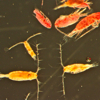
A new VIMS study shows that turbulence from boat propellers can and does kill large numbers of copepods—tiny crustaceans that are an important part of marine food webs.
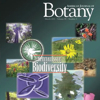
An international research team that includes professor Emmett Duffy of VIMS finds that loss of plant biodiversity disrupts the fundamental services that ecosystems provide to humanity.
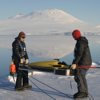
Tests of a free-swimming underwater glider in the icy waters of Antarctica mark the most southerly glider deployment ever and the first successful glider dive beneath the Ross Ice Shelf.

Professor Deborah Bronk leads a study of the Arctic coastal ecosystem, and how climate change might affect nutrient supplies, the food web, and native peoples.
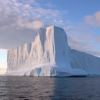
A research team led by professor Deborah Steinberg has returned to Antarctica for their annual 6-week field season.
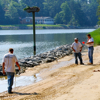
VIMS and Longwood University's Hull Springs Farm will partner to restore wetlands, stream buffers, and streams.
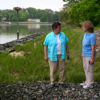
Tools developed by the Center for Coastal Resources Management include interactive maps of York River wetlands and guidance procedures for "living shorelines."
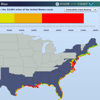
NOAA's new State of the Coast website incorporates data and findings from several researchers and research teams at VIMS.
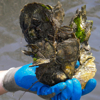
The Lynnhaven River Oyster Restoration Team is honored for innovative efforts to restore the river's oyster population.

Study shows that continuation of current shoreline-protection strategies will cause more than half of East Coast tidal wetlands to drown beneath rising seas during the coming century.
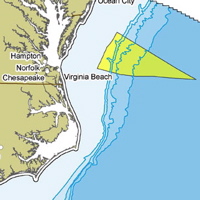
VIMS hosts a scientific workshop to determine research needs concerning potential development of Virginia's offshore oil and gas resources.

A major gift from Norfolk Dredging Company will help VIMS researchers advance their studies of seafloor history and ecology. VIMS will use the funds to purchase an automatic core logger that can uncover a wealth of environmental data from seafloor sediment cores.

VIMS researchers receive a prestigious national award for their efforts to help restore the Elizabeth River, a highly industrialized Chesapeake Bay that includes three "Superfund" sites.